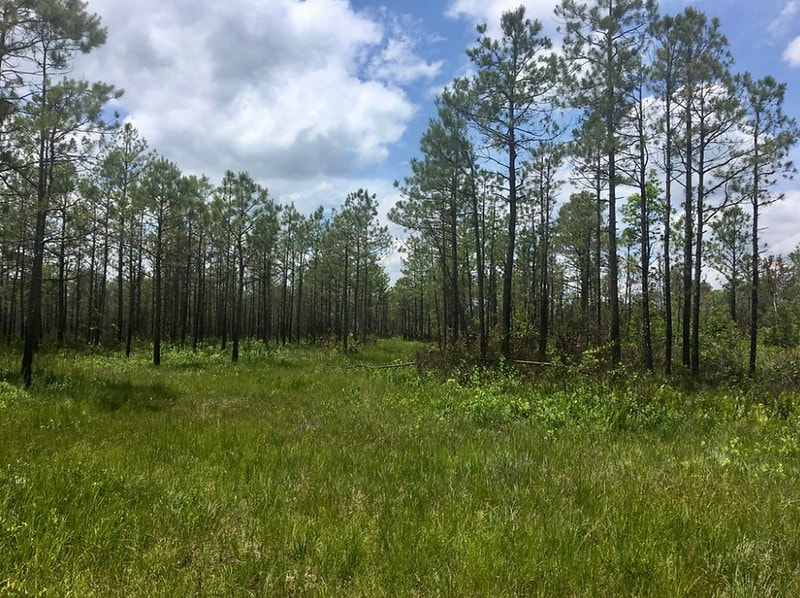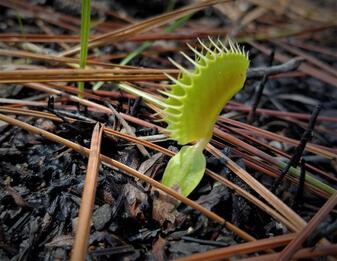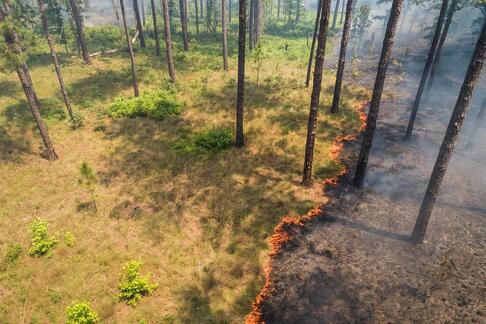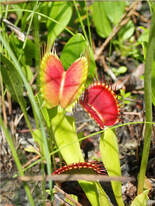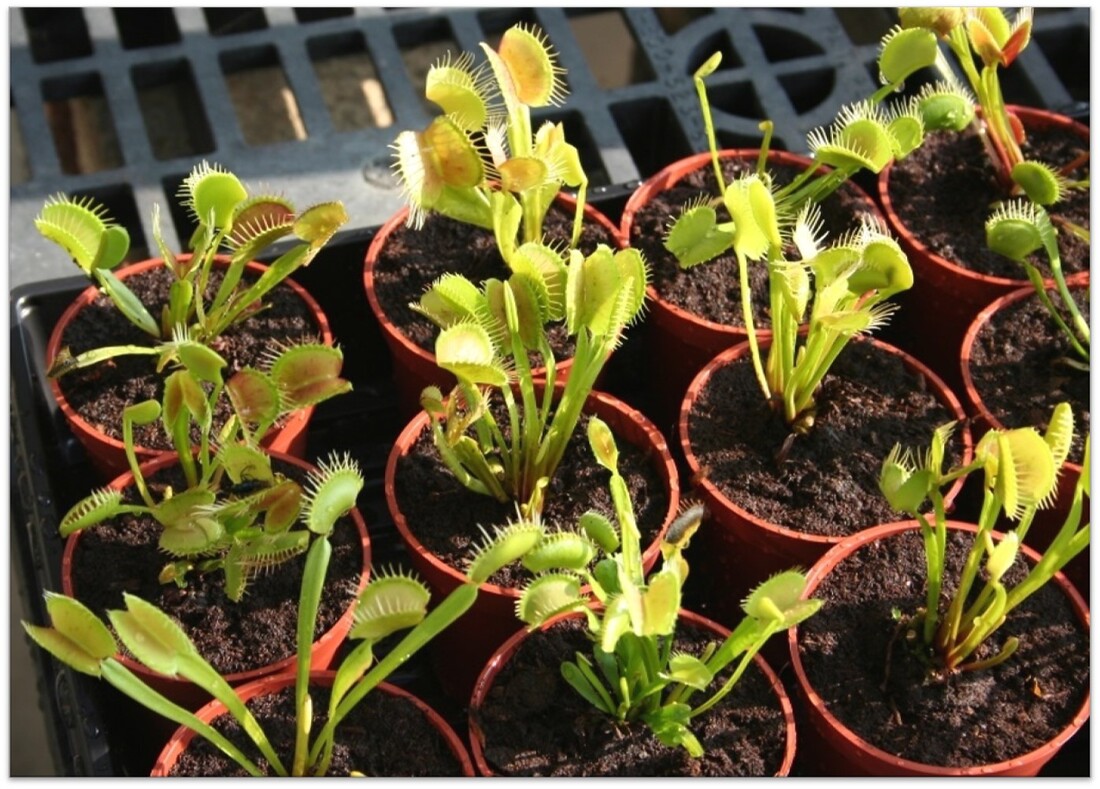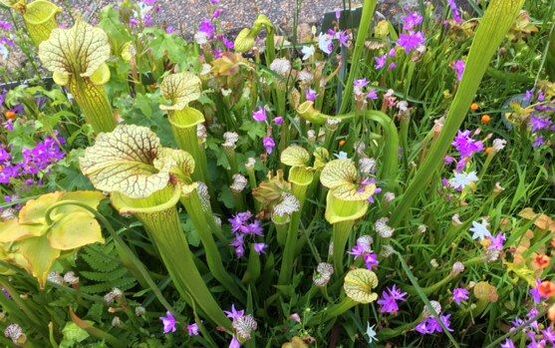Defending Venus Flytrap
|
While the biggest threat to the long-term survival of Venus Flytrap is from habitat destruction, removal of plants from the wild (often labeled "poaching") is an issue as well. Read more HERE, and also HERE for another viewpoint.
|
Landowners in the Carolinas, especially those with substantial populations of Venus Flytrap on their property, can play a significant role in maintaining the remaining Flytrap populations and preventing extirpation of this fascinating, management-dependent species and the many other insectivorous and uncommon species that grow with it in savanna habitats. Guidance and training in how to implement prescribed burning and restore habitat and drainage patterns on land are available.
| ||
Looking for Venus Flytraps on your land
If you have appropriate habitat and are located within the historic range of this fascinating plant species, you may have Venus Flytraps on your land! See our GUIDE to where to look.
If you do have Flytraps on your land
|
Frequent fire is essential to maintaining habitat for Venus Flytrap by removing shrubs and other plants that keep sunlight from reaching the ground. In general, carnivorous plants compete poorly with other plants; but their resilience gives them an edge over their shrubby competitors, and they grow back quickly after a fire, sometimes within a matter of days. To replicate the once frequent, lightening-generated fires of the past, prescribed burning is needed to maintain the open habitat.
|
|
Flytraps decline with too much shade and competition from other plants, and if drainage ditches dry out the soil. Flytraps on your land need sunlight, so keep the habitat open by removing overstory trees and shrubs. They also need moist soil, so maintain the natural drainage patterns.
Neither fertilizer nor herbicides should be used in existing Venus Flytrap habitat! In addition, avoid ditching and draining: this can result in either too-dry soil or areas with too much water. |
The following video will give you a sense of the kinds of management strategies that support Venus flytrap.
|
Technical help for managing Flytrap habitat
Use our CONTACT FORM to get in touch. Also, consult the following organizations/agencies for technical management assistance and possible cost-share funds for burning and restoration activities on your land:
A "Venus Flytrap Champion" is a landowner who is committed to protecting the plants on their property and actively managing the habitat so the plants prosper. Other "Champions" are the managers of state and federal lands who are doing an exceptional job to make sure the Flytrap populations there persist and increase.
Read about some recognized Venus Flytrap Champions HERE.
If you actively manage Venus Flytraps on your property or property you are responsible for, you are a "Venus Flytrap Champion" and we want to help you find the assistance you may need to maintain habitat.
The inventories conducted in 2019 and 2020 to verify 100 previously known populations documented fewer than 70 remaining populations on public and private lands. Many of these have fewer than 200 plants, largely due to lack of regular burning of the habitat. We hope you are interested in looking after and managing your Venus Flytrap population. The proposed listing under the Endangered Species Act may not be needed if the threats are addressed and the number of populations and individual plants is increased by active management.
We will be contacting the landowners who graciously allowed botanists to visit their properties to verify Flytrap populations, to ask if they are interested in conserving these populations and what technical assistance they may need. If you have discovered flytraps or suitable habitat on your property since the inventory, we would like to talk to you about assessing the population.
If you would like to learn more about maintaining and improving your Venus Flytrap population, we can provide information, technical assistance, and suggestions for possible management funding.
>>>>Use our CONTACT FORM.
Read about some recognized Venus Flytrap Champions HERE.
If you actively manage Venus Flytraps on your property or property you are responsible for, you are a "Venus Flytrap Champion" and we want to help you find the assistance you may need to maintain habitat.
The inventories conducted in 2019 and 2020 to verify 100 previously known populations documented fewer than 70 remaining populations on public and private lands. Many of these have fewer than 200 plants, largely due to lack of regular burning of the habitat. We hope you are interested in looking after and managing your Venus Flytrap population. The proposed listing under the Endangered Species Act may not be needed if the threats are addressed and the number of populations and individual plants is increased by active management.
We will be contacting the landowners who graciously allowed botanists to visit their properties to verify Flytrap populations, to ask if they are interested in conserving these populations and what technical assistance they may need. If you have discovered flytraps or suitable habitat on your property since the inventory, we would like to talk to you about assessing the population.
If you would like to learn more about maintaining and improving your Venus Flytrap population, we can provide information, technical assistance, and suggestions for possible management funding.
>>>>Use our CONTACT FORM.
Ethical sources of plants
|
Horticultural selections of flytraps are now being nursery-propagated and can be ethically and legitimately obtained at reasonable cost without risk to natural populations. If you want to purchase Venus Flytrap to introduce into your garden, it is important to obtain them from a trustworthy source. Look for reputable garden centers and nurseries that sell nursery-propagated plants--that is, plants that were not harvested from the wild. Follow these TIPS from the U.S. Fish & Wildlife Service.
| ||||

